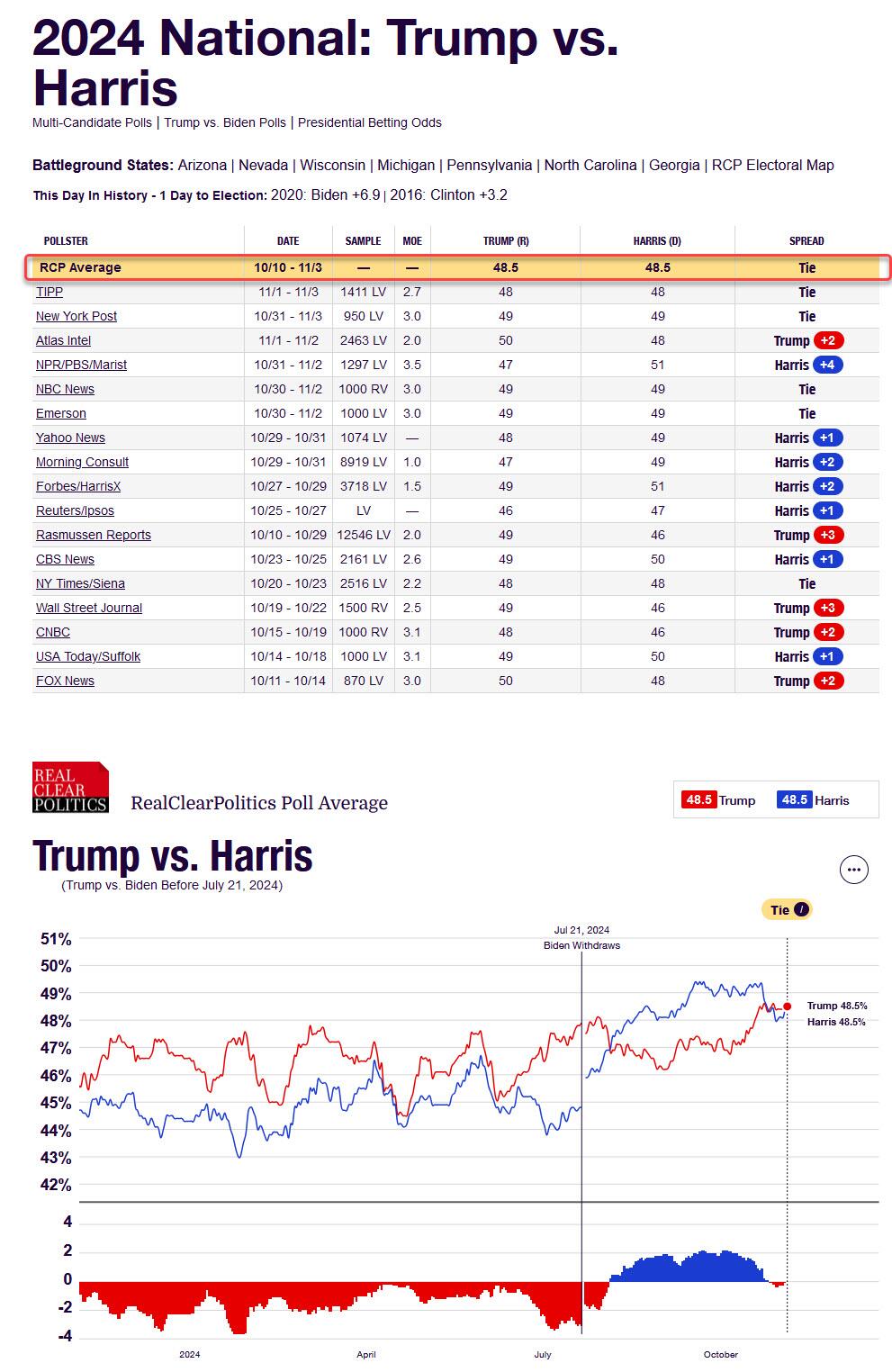The Closest Election In History?
According to RealClearPolitics, the current US Presidential polling averages have Trump at 48.5% and Harris at 48.5%, literally a tie.
On this measure the two candidates have been within two percentage points of each other since mid-August. So in terms of the popular vote, this is officially the closest election on record.
Today's Chart of the Day from DB's Henry Allen (available to pro subscribers in the usual place), looks at the gap between the candidate declared President and the runner up in percentage terms in every election since 1868 after the US Civil War.
Those in red mark the times where the eventual President didn’t win the popular vote. Allen has also annotated all those with less than a 3 percentage point differential.
There have been six elections with less than a percentage point between the candidates.
- 1880 Garfield beat Hancock by 0.1pp
- 1884 Cleveland beat Blaine by 0.5pp
- 1888 Harrison was elected although he lost the popular vote to Cleveland by -0.8pp
- 1960 Kennedy beat Nixon by 0.2pp
- 1968 Nixon beat Humphrey by 0.7pp
- 2000 Bush won even though he lost the popular vote to Gore by -0.5pp. See Henry Allen’s piece here this morning that looked at the market reaction after each election since and including this contested one.
So if current polls are correct then this could be the closest of any US election in popular vote terms. Of course in reality, polls are subject to a margin of error, so you’d expect some variation, but one thing is certain: in just a few days, the avalanche of lawsuits will begin.
Literally the worst case scenario for the country. Why? The 2020 census was wrong, as the Census Bureau has admitted...and it gave extra electoral college votes to blue states. If they'd done it right, Trump would win WITHOUT any of the blue wall states. Get ready for lawsuits. https://t.co/hJR1tiwUGB
— Ben Shapiro (@benshapiro) November 4, 2024
Shortly we will publish a comprehensive Election Day guide, providing a comprehensive overview of the "swing states" that will decide the election, a list of bellwether counties to pay attention to within those states, as well as a precise recap of the time line for vote reporting and media projections of the winner in 2020.
It will also cover the rules for challenging the voting results in the swing states as well as rule changes at the federal level adopted in the wake of the last election.
Finally, we caution that while a winner is likely to be declared in MI, AZ, WI and NV within the first 24 hours of the polls closing on Tuesday, PA and GA are likely to take longer to assess – potentially 3-4 days or longer if there are recounts.
So if it is close, stand by for a long few days/weeks/months.
NEVER MISS THE NEWS THAT MATTERS MOST
ZEROHEDGE DIRECTLY TO YOUR INBOX
Receive a daily recap featuring a curated list of must-read stories.




